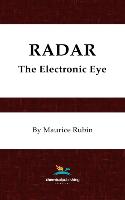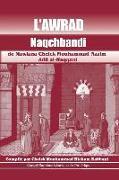Radar, the Electronic Eye
BücherAngebote / Angebote:
Contents -
INTRODUCTION -
1. RADAR IN WAR -
What Radar is -
Radar and the U-boats -
Radar in Naval Battles -
General Characteristics and Requirements -
2. RADAR DISTINGUISHED FROM RADIO -
Relations among Frequency, Wave Length, Velocity-
Comparison of Power Transmitted and Received -
Power Received by a Radar Receiver -
Advantages of Microwaves -
3. TRANSMISSION LINES, WAVE GUIDES, CAVITIES -
Characteristic Impedance of Infinite Line -
Electric and Magnetic Fields in Wave Guides -
Modes in Wave Guides -
The Magic or Hybrid T -
Resonance Effects in Wave Guides -
Evolution of the Cavity Resonator -
Segments of Transmission Lines -
Filters for Wave Guides -
4. TUBES FOR RADAR OSCILLATORS -
Ineffectiveness of Ordinary Vacuum Tubes -
Movement of Charge Produces Current -
Operation of Magnetrons -
Manufacture of Magnetrons -
Klystrons -
5. THE RECEIVER -
General Requirements of Radar Receiver -
Requirements of Superheterodyne in Radar -
Radar Crystals -
Local or Beating Oscillator -
Intermediate Amplifier -
Need for Frequency Control -
Details and Operation of Discriminator -
Video Amplifier -
6. MODULATORS AND WAVE SHAPERS -
Phase Relations -
Production of sawtooth waves -
Multivibrators -
Electronic Switch -
Blocking Oscillator -
Pulse Transformer -
Modulator with Saturable Core Reactor Switch -
7. INDICATORS AND CATHODE RAY TUBES -
Types of Indicators -
Electrostatic Cathode Ray Tube -
Cathode Ray Tube Screens -
Magnetic Cathode Ray Tube -
Sweep Circuit and Amplifier -
Producing Sweeps for Magnetically Controlled Indicators -
8. ROTARY INDUCTORS -
Synchros -
Types of Synchro Combinations -
Synchro-generator -
Synchro-motor -
Resolvers -
D.C. Selsyns -
Servos -
Use of Servo-Amplifier with D.C. Motor -
Servo Employing an Amplidyne -
9. TRANSMIT-RECEIVE DEVICES -
Purpose of T-R Switch -
Operation of T-R Switch -
Details of T-R Switch -
Cause of "Spike" in Discharge -
Life of T-R Tube -
Details of Switching Action -
10. ANTENNAS -
Antenna as Transmission Line -
Character of Fields Around Antennas -
Use of Reflectors with Antennas -
How Antennas are fed -
Effect of Earth on Transmission -
Radar Line of Sight -
Metal Lens Antenna -
II. OBSERVATIONS ON RADAR SYSTEMS -
Simple Radar in Block Form -
Three-centimeter Radar System -
Ten-centimeter Radar System -
Size of Target and Width of Beam -
Factors Determining Range of Radar -
Strength of Echo -
12. MEASUREMENTS AND TESTING -
Measurements of Fields Important in Radar -
Wave Meters -
Echo Box -
Measurement of Low Power with Thermistor -
Measuring Loss in Dielectrics -
Care and Measurements of Magnetron -
Microwave Signal Generator -
13. FUNDAMENTAL COMPONENTS IN RADAR -
Materials and Construction of Wire-wound Resistors -
Uses of Thermistors -
Materials and Properties of Coils -
Impedance of Transmission Lines in Practice -
Electromagnetic Delay Lines -
Lines with Distributed Parameters -
Methods of Varying Delay in Lines -
Bandwidth of Piezo-Electric Crystals -
Resistance Wire -
Treatment of Winding -
Noise -
Variable Condensers for Shift in Phase -
Converters -
Inverters -
Vibrators -
Circuit of a Vibrator -
General Requirements of Relays -
Magnetic Circuits of Relays -
Temperature Limitations of Relays -
Relation of Air Gap to Relay Operation -
14. RADAR IN PEACETIME -
Guiding Airplanes for Landing -
Use of Beacons -
Navigating with Loran -
Radar as Altimeter -
Use of Radar to Prevent Collisions -
Corner Reflectors -
Limits of Radar -
Pseudo-Radar -
Radar in the Future -
GLOSSARY -
APPENDIX -
INDEX -
Folgt in ca. 15 Arbeitstagen

